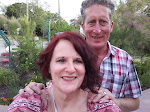Hands-on, no-fail craft projects work best for all children but especially those with special needs. Here are cardboard puppet crafts that are easy for kids and free to make using simple supplies and recycled materials. For homemade puppets, you will need:
4-6 brads (also called paper fasteners) per child
stapler
assortment of recycled cardboard scraps in many shapes and sizes.
You can use scraps from projects. There should be some plain geometric shapes and also some more complicated shapes. Each piece should be no larger than 6-8 inches across and no smaller than two inches. There should be long, thin shapes as well as broader shapes. Cut some inch-wide strips of cardboard and keep those separate.
You'll also need decorations: (these are all optional; use whatever you have available). Suggestions include wallpaper sample books, recycled bin paper scraps--gift wrapping paper scraps, tissue paper scraps, recycle bin construction paper scraps. recycled paper tubes, ribbon, crepe paper and yarn scraps, faux feathers and gems, glitter or glitter glue, markers, paint, silk flowers, pipe cleaners and buttons.
Procedure: Children will assemble a puppet from found scraps. Found means children must use recycled cardboard scraps as they are, no cutting or reshaping. The idea is to teach creativity using whatever is available. Puppets may represent people, animals, fantasy creatures, aliens or even non-living things like vehicles.
Lay out puppet pieces before assembling. Puppets should have at least two body parts, preferably 3-5. Cover or decorate each individual piece before assembling homemade puppets. Children should trace and cut paper or fabric to fit puppet pieces and glue paper on. They may paint or color puppet pieces. Feathers, gems, flowers or other embellishments should be attached after puppets are assembled.
Assemble puppets in this way: Attach moving parts--arms, tail, head, legs--with brads. Punch holes through the fixed and moving part of cardboard. Push fastener through and fold metal prongs back. Attach stationary parts with tape or stapler. Attach embellishments with stapler, glue or tape. Attach two recycled cardboard strips, sticks or rulers to use as handles to move the puppet. Children should work together in groups to create a story using incorporating each of their homemade puppets into the plot.
4-6 brads (also called paper fasteners) per child
stapler
assortment of recycled cardboard scraps in many shapes and sizes.
You can use scraps from projects. There should be some plain geometric shapes and also some more complicated shapes. Each piece should be no larger than 6-8 inches across and no smaller than two inches. There should be long, thin shapes as well as broader shapes. Cut some inch-wide strips of cardboard and keep those separate.
You'll also need decorations: (these are all optional; use whatever you have available). Suggestions include wallpaper sample books, recycled bin paper scraps--gift wrapping paper scraps, tissue paper scraps, recycle bin construction paper scraps. recycled paper tubes, ribbon, crepe paper and yarn scraps, faux feathers and gems, glitter or glitter glue, markers, paint, silk flowers, pipe cleaners and buttons.
Procedure: Children will assemble a puppet from found scraps. Found means children must use recycled cardboard scraps as they are, no cutting or reshaping. The idea is to teach creativity using whatever is available. Puppets may represent people, animals, fantasy creatures, aliens or even non-living things like vehicles.
Lay out puppet pieces before assembling. Puppets should have at least two body parts, preferably 3-5. Cover or decorate each individual piece before assembling homemade puppets. Children should trace and cut paper or fabric to fit puppet pieces and glue paper on. They may paint or color puppet pieces. Feathers, gems, flowers or other embellishments should be attached after puppets are assembled.
Assemble puppets in this way: Attach moving parts--arms, tail, head, legs--with brads. Punch holes through the fixed and moving part of cardboard. Push fastener through and fold metal prongs back. Attach stationary parts with tape or stapler. Attach embellishments with stapler, glue or tape. Attach two recycled cardboard strips, sticks or rulers to use as handles to move the puppet. Children should work together in groups to create a story using incorporating each of their homemade puppets into the plot.



